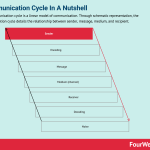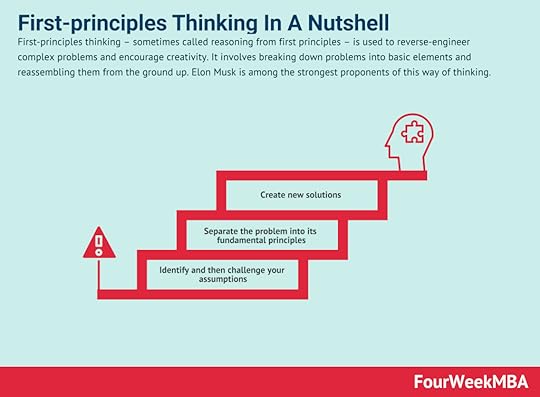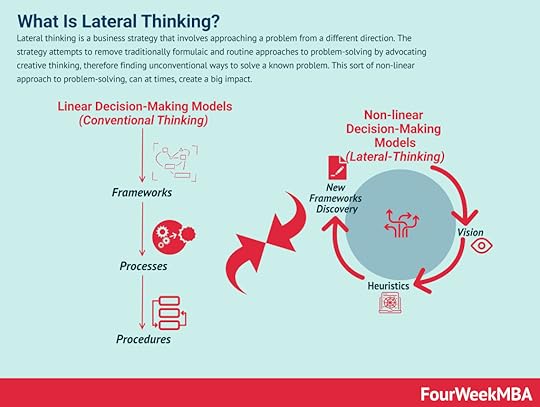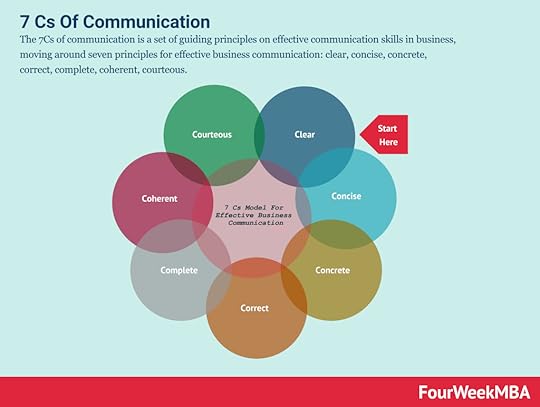What Is A Linear Model Of Communication? The Linear Model Of Communication In A Nutshell


The linear model of communication is a relatively simplistic model envisaging a process in which a sender encodes and transmits a message that is received and decoded by a recipient. The linear model of communication suggests communication moves in one direction only. The sender transmits a message to the receiver, but the receiver does not transmit a response or provide feedback to the sender.
Understanding linear models of communicationThe linear model of communication is a relatively simplistic model envisaging a process in which a sender encodes and transmits a message that is received and decoded by a recipient.
Linear communication models are especially useful in customer-centric business activities such as marketing, sales, public relations, and broadcast advertising. In fact, linear models may be effective in any scenario where message feedback from the recipient is quite separate from the initial communication itself.
These models also help companies determine how their promotional messages may be altered by their encoding process, choice of the transmission medium, and any potential noise interference.
The Shannon-Weaver model, the basis for all modern communication models, considers the communication process to be linear and one-way. Developed in 1949 by Claude Shannon and Warren Weaver, it consists of six elements:
Sender (information source) – the person who starts the communication process by transmitting information.Encoder (transmitter) – the person or machine responsible for converting the information into a signal that can be understood by the receiver. In Shannon and Weaver’s day, one-way communication was the norm and occurred mostly via telegraph and radio.Channel (medium) – or the infrastructure supporting the transmission of the message from sender to receiver. An individual sending an email is using the internet as their channel.Noise – or any factor responsible for the information being misinterpreted, categorized according to whether it is internal or external. Internal noise is the result of the sender making a mistake, such as a misspelled word in a text message. External noise occurs when something outside the control of the sender or receiver impedes the message. Two people attempting to have a conversation at a loud rock concert is one example.Decoder – in most cases, a device that decodes the encoded message sent by the sender into a format that is understandable for the receiver. Today, this device is usually a smartphone.Receiver (destination) – the receiver is the person who receives the information transmitted by the sender. Other linear communication modelsIn this section, let’s take a look at some other linear communication models.
Aristotle’s model The Aristotle model of communication is a linear model with a focus on public speaking. The Aristotle model of communication was developed by Greek philosopher and orator Aristotle, who proposed the linear model to demonstrate the importance of the speaker and their audience during communication.
The Aristotle model of communication is a linear model with a focus on public speaking. The Aristotle model of communication was developed by Greek philosopher and orator Aristotle, who proposed the linear model to demonstrate the importance of the speaker and their audience during communication. Although the Shannon-Weaver model was one of the first modern communication frameworks, Greek philosopher Aristotle proposed a similar model around 300 B.C. Aristotle focused on public speaking as opposed to interpersonal communication.
As a result, the Aristotle model of communication can be broken down into five broad elements:
Speaker – the individual delivering the message.Speech – the information that is communicated.Occasion – the context of the communication. For example, the occasion of a politician delivering an address to votes may be an imminent election.Audience – a collection of individuals who passively receive the information that is transmitted.Effect – the intention of the speaker. In the case of a politician, their communication intends to persuade voters to vote for them.Since Aristotle’s model is speaker-centric, it also details three elements that are essential to effective public speaking. These relate to credibility, authority, and an ability to connect with the audience on an emotional level. The speaker must also be able to support their statements with relevant facts and data.
Berlo’s SMCR modelBerlo’s SMCR model was developed by American communication theorist David Berlo in 1960. Berlo took the Shannon-Weaver model and expanded it into several clear and distinct components. He saw communication as a linear process that was only successful when the skills of the person receiving the message complemented (or were equal to) those of the sender.
There are four elements to the model which comprise the SMCR acronym:
Source/sender (S) – where the message originates. The source is impacted by factors such as communication skills, knowledge, culture, social system, and attitude.Message (M) – the information that is sent from the sender to the receiver. Message factors include content, elements (language, gesturing), treatment (how the message is conveyed), and structure. Code, or the means through which the message is sent and in what form, is also important. For the message to be clear, the code must be clear.Channel (C) – in Berlo’s model, a channel refers to the five senses: hearing, seeing, smelling, tasting, and touching. Most messages are heard or seen, but the other senses are also important.Receiver (R) – the individual who receives the message. For the message to be understood correctly, the receiver must possess comparable traits in terms of culture, social system, attitude, knowledge, or skill.Lasswell’s communication modelLasswell’s communication model was created by Harold Lasswell, a political scientist and communication theorist.
 The Lasswell communication model is a linear framework for explaining the communication process through segmentation. Lasswell proposed media propaganda performs three social functions: surveillance, correlation, transmission. Lasswell believed the media could impact what viewers believed about the information presented.
The Lasswell communication model is a linear framework for explaining the communication process through segmentation. Lasswell proposed media propaganda performs three social functions: surveillance, correlation, transmission. Lasswell believed the media could impact what viewers believed about the information presented. Lasswell’s model describes the communication process by asking the following questions:
Who? – this may be a person or institution in a position of authority.Says what? – the message that is communicated, such as a news story, political story, or some other story with a hero, villain, and important theme.In which channel? – such as television, radio, magazines, letters, or photography.To whom? – the receiver of the message. Lasswell noted that this encompassed citizens, newspaper readers, or specific segments such as children, adults, or women.With what effect? – or the context-dependent feedback the receiver sends to the sender.The model was initially created to analyze mass communication by the media and the role that media propaganda plays in society. However, it can also be used for interpersonal communication or in any situation where information is disseminated to groups. In this way, Lasswell’s model incorporates aspects of non-linear communication.
Criticisms of linear models of communicationAlthough straightforward and easy to understand, there are obvious limitations to linear models of communication.
Communication theories proposed by Shannon and Weaver assume communication to be a one-way process where each person takes turns sending and receiving information. Modern scholars, however, tend to agree that communication is a more complicated and dynamic process where both individuals embody the sender and receiver role simultaneously.
This is especially true during face-to-face conversations, where body language and gesturing complements spoken language as a means of transmitting messages. Theorist Norbert Weiner later added a seventh element to the Shannon-Weaver model to describe feedback, or the receiver’s interpretation of the transmitted message sent back to the sender. However, some saw this addition as an afterthought since the concept of feedback was foreign to Weaver when he developed the model.
Furthermore, linear models fail to consider how context or an individual’s personal experiences impact communication. Some people may shout at the television during a sporting match based on their personality and unique life experiences, while others may react calmly to the same footage. Of course, the television broadcaster transmitting the message is doing so to a large number of receivers and cannot possibly cater to them all.
Laswell’s model of communication, another linear communication model, seeks to address this limitation by deconstructing the elements of mass communication into five distinct components. These components help the receiver decipher the meaning of the message sent and the intention of the individual or company sending it.
Key takeaways:Linear models of communication suggest communication moves in one direction only. The sender transmits a message to the receiver, but the receiver does not transmit a response or provide feedback to the sender.The first linear model of communication was the Shannon-Weaver model. The six elements that describe the one-way communication process are sender, encoder, channel, noise, decoder, and receiver.There are several limitations to linear communication models. For one, they ignore the fact that communication is a dynamic process where both individuals embody the sender and receiver roles simultaneously. They also ignore non-verbal forms of communication in face-to-face conversation and how messages are interpreted when there is one sender and multiple receivers.Connected Business Frameworks First-principles thinking – sometimes called reasoning from first principles – is used to reverse-engineer complex problems and encourage creativity. It involves breaking down problems into basic elements and reassembling them from the ground up. Elon Musk is among the strongest proponents of this way of thinking.
First-principles thinking – sometimes called reasoning from first principles – is used to reverse-engineer complex problems and encourage creativity. It involves breaking down problems into basic elements and reassembling them from the ground up. Elon Musk is among the strongest proponents of this way of thinking. The ladder of inference is a conscious or subconscious thinking process where an individual moves from a fact to a decision or action. The ladder of inference was created by academic Chris Argyris to illustrate how people form and then use mental models to make decisions.
The ladder of inference is a conscious or subconscious thinking process where an individual moves from a fact to a decision or action. The ladder of inference was created by academic Chris Argyris to illustrate how people form and then use mental models to make decisions. The Six Thinking Hats model was created by psychologist Edward de Bono in 1986, who noted that personality type was a key driver of how people approached problem-solving. For example, optimists view situations differently from pessimists. Analytical individuals may generate ideas that a more emotional person would not, and vice versa.
The Six Thinking Hats model was created by psychologist Edward de Bono in 1986, who noted that personality type was a key driver of how people approached problem-solving. For example, optimists view situations differently from pessimists. Analytical individuals may generate ideas that a more emotional person would not, and vice versa. Second-order thinking is a means of assessing the implications of our decisions by considering future consequences. Second-order thinking is a mental model that considers all future possibilities. It encourages individuals to think outside of the box so that they can prepare for every and eventuality. It also discourages the tendency for individuals to default to the most obvious choice.
Second-order thinking is a means of assessing the implications of our decisions by considering future consequences. Second-order thinking is a mental model that considers all future possibilities. It encourages individuals to think outside of the box so that they can prepare for every and eventuality. It also discourages the tendency for individuals to default to the most obvious choice. Lateral thinking is a business strategy that involves approaching a problem from a different direction. The strategy attempts to remove traditionally formulaic and routine approaches to problem-solving by advocating creative thinking, therefore finding unconventional ways to solve a known problem. This sort of non-linear approach to problem-solving, can at times, create a big impact.
Lateral thinking is a business strategy that involves approaching a problem from a different direction. The strategy attempts to remove traditionally formulaic and routine approaches to problem-solving by advocating creative thinking, therefore finding unconventional ways to solve a known problem. This sort of non-linear approach to problem-solving, can at times, create a big impact. Moonshot thinking is an approach to innovation, and it can be applied to business or any other discipline where you target at least 10X goals. That shifts the mindset, and it empowers a team of people to look for unconventional solutions, thus starting from first principles, by leveraging on fast-paced experimentation.
Moonshot thinking is an approach to innovation, and it can be applied to business or any other discipline where you target at least 10X goals. That shifts the mindset, and it empowers a team of people to look for unconventional solutions, thus starting from first principles, by leveraging on fast-paced experimentation. Tim Brown, Executive Chair of IDEO, defined design thinking as “a human-centered approach to innovation that draws from the designer’s toolkit to integrate the needs of people, the possibilities of technology, and the requirements for business success.” Therefore, desirability, feasibility, and viability are balanced to solve critical problems.
Tim Brown, Executive Chair of IDEO, defined design thinking as “a human-centered approach to innovation that draws from the designer’s toolkit to integrate the needs of people, the possibilities of technology, and the requirements for business success.” Therefore, desirability, feasibility, and viability are balanced to solve critical problems. The CATWOE analysis is a problem-solving strategy that asks businesses to look at an issue from six different perspectives. The CATWOE analysis is an in-depth and holistic approach to problem-solving because it enables businesses to consider all perspectives. This often forces management out of habitual ways of thinking that would otherwise hinder growth and profitability. Most importantly, the CATWOE analysis allows businesses to combine multiple perspectives into a single, unifying solution.
The CATWOE analysis is a problem-solving strategy that asks businesses to look at an issue from six different perspectives. The CATWOE analysis is an in-depth and holistic approach to problem-solving because it enables businesses to consider all perspectives. This often forces management out of habitual ways of thinking that would otherwise hinder growth and profitability. Most importantly, the CATWOE analysis allows businesses to combine multiple perspectives into a single, unifying solution. The 7Cs of communication is a set of guiding principles on effective communication skills in business, moving around seven principles for effective business communication: clear, concise, concrete, correct, complete, coherent, courteous.
The 7Cs of communication is a set of guiding principles on effective communication skills in business, moving around seven principles for effective business communication: clear, concise, concrete, correct, complete, coherent, courteous. Read More:
Business ModelsBusiness StrategyMarketing StrategyBusiness Model InnovationPlatform Business ModelsNetwork Effects In A NutshellDigital Business ModelsThe post What Is A Linear Model Of Communication? The Linear Model Of Communication In A Nutshell appeared first on FourWeekMBA.



